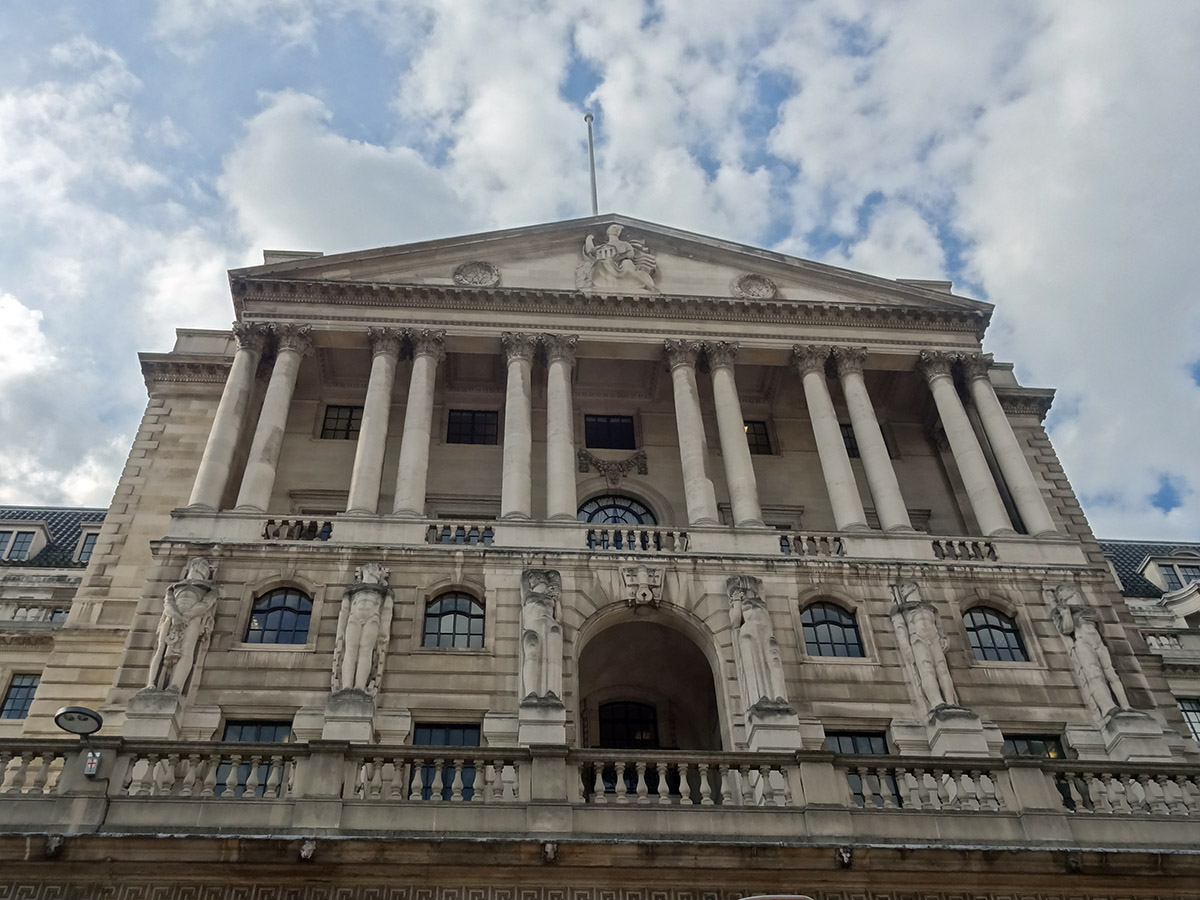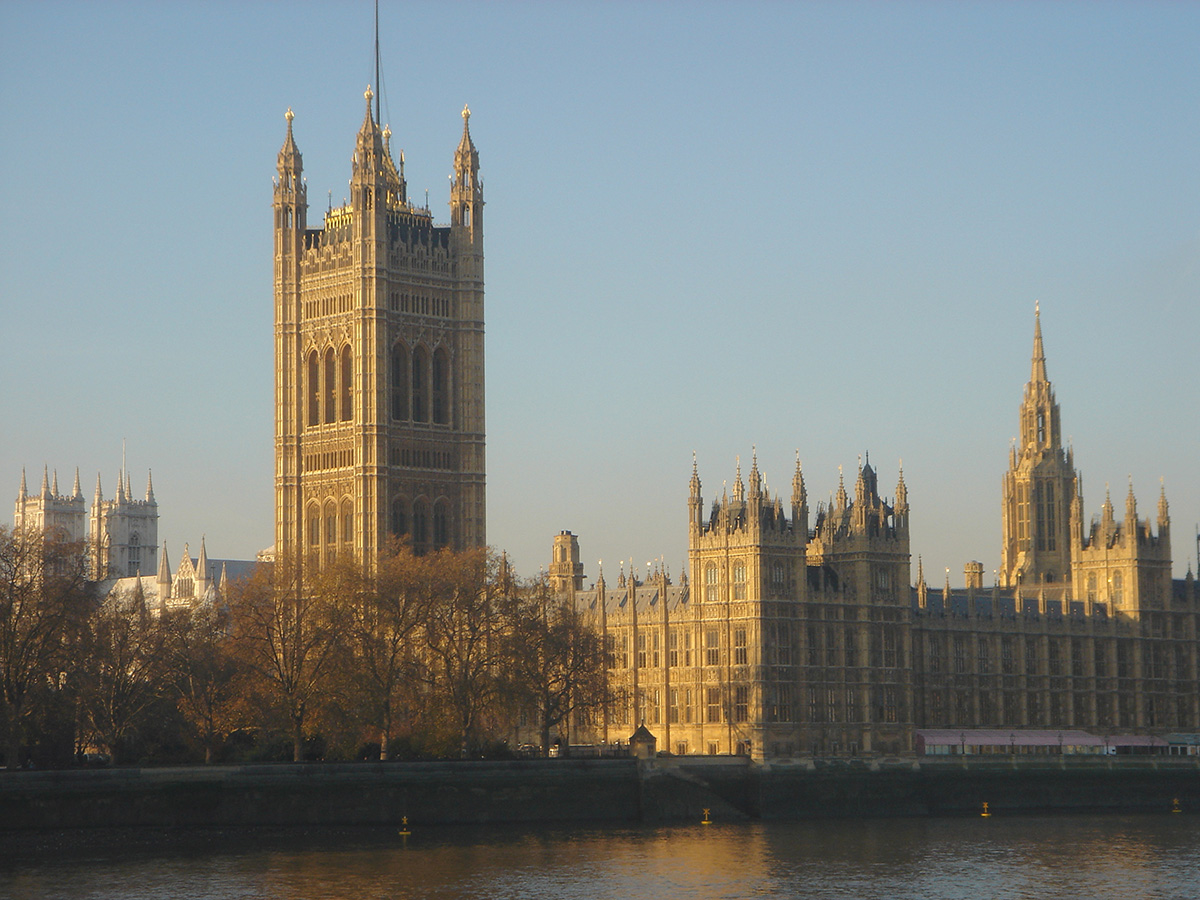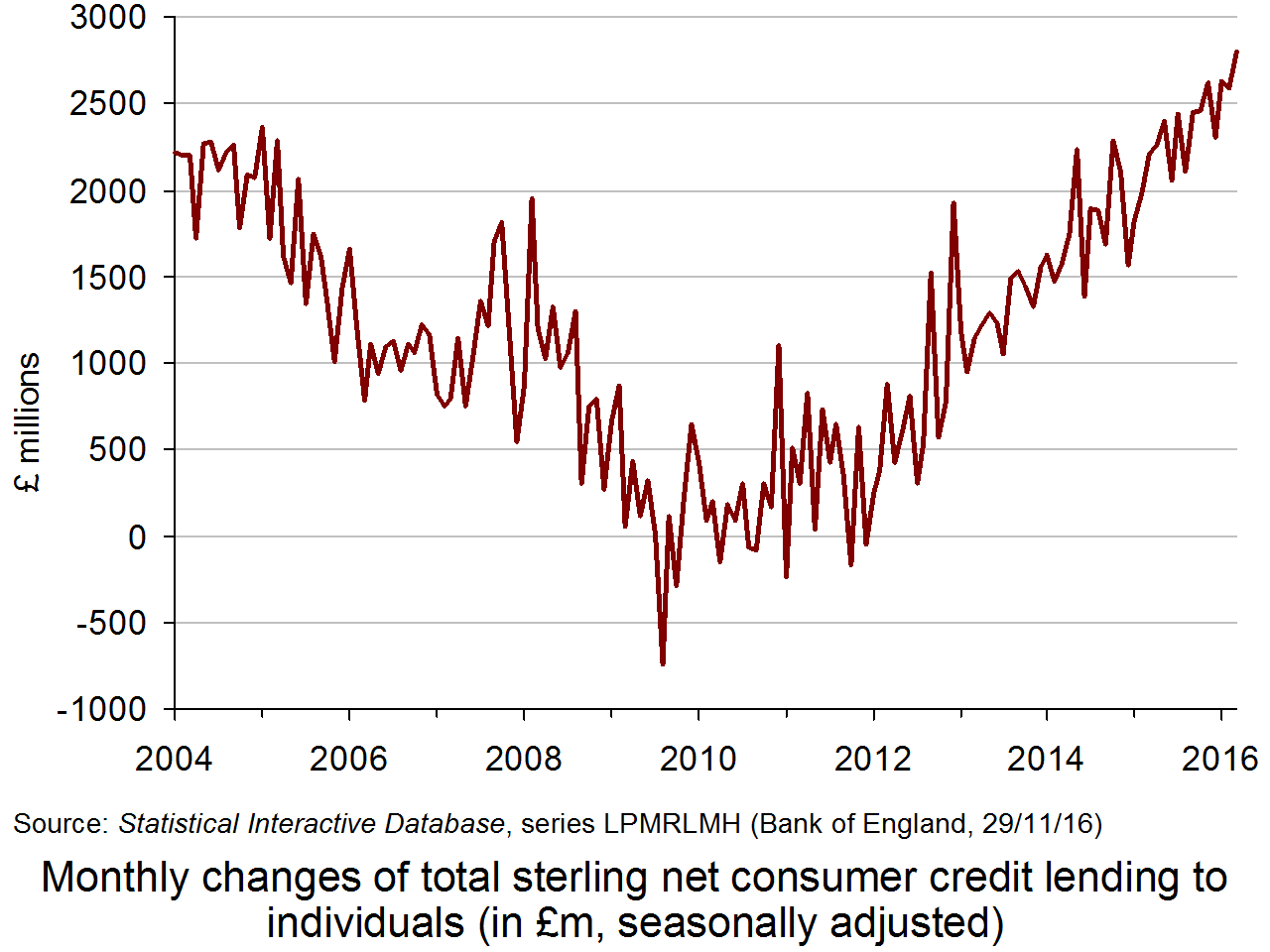 In this third blog about inflation, we focus on monetary policy to deal with the problem and bring inflation back to the target rate, which is typically 2 per cent around the world (including the eurozone, the USA and the UK). We ask the questions: was the response of central banks too timid initially, meaning that harsher measures had to be taken later; and will these harsher measures turn out to be excessive? In other words, has the eventual response been ‘too much, too late’, given that the initial measures were too little?
In this third blog about inflation, we focus on monetary policy to deal with the problem and bring inflation back to the target rate, which is typically 2 per cent around the world (including the eurozone, the USA and the UK). We ask the questions: was the response of central banks too timid initially, meaning that harsher measures had to be taken later; and will these harsher measures turn out to be excessive? In other words, has the eventual response been ‘too much, too late’, given that the initial measures were too little?
Inflation rates began rising in the second half of 2021 as economies began to open up as the pandemic subsided. Supply-chain problems drove the initial rise in prices. Then, following the Russian invasion of Ukraine in February 2022 and the adverse effects on oil, gas and grain prices, inflation rose further. In the UK, CPI inflation peaked at 11.1% in October 2022 (see chart 1 in the first of these three blogs). Across the whole EU-27, it peaked at 11.5% in October 2022; US inflation peaked at 9.1% in June 2022; Japanese inflation peaked at 4.3% in January 2023.
This raises the questions of why interest rates were not raised by a greater amount earlier (was it too little, too late?) and why they have continued to be raised once inflation rates have peaked (is it too much, too late?).
The problem of time lags
 Both inflation and monetary policy involve time lags. Rising costs take a time to work their way through the supply chain. Firms may use old stocks for a time which are at the original price. If it is anticipated that costs will rise, central banks will need to take action early and not wait until all cost increases have worked their way through to retail prices.
Both inflation and monetary policy involve time lags. Rising costs take a time to work their way through the supply chain. Firms may use old stocks for a time which are at the original price. If it is anticipated that costs will rise, central banks will need to take action early and not wait until all cost increases have worked their way through to retail prices.
In terms of monetary policy, the lags tend to be long.
If central bank interest rates are raised, it may take some time for banks to raise savings rates – a common complaint by savers.
As far as borrowing rates are concerned, as we saw in the previous blog, loans secured on dwellings (mortgages) account for the majority of households’ financial liabilities (76.4% in 2021) and here the time lags between central bank interest rate changes and changes in people’s mortgage interest rates can be very long. Only around 14 of UK mortgages are at variable rates; the rest are fixed, typically for between 2 to 5 years. So, when Bank Rate changes, people on fixed rates will be unaffected until their mortgage comes up for renewal, when they can be faced with a huge increase in payments.
 Only around 21% of mortgages in England were/are due for renewal in 2023, and with 57% of these the old fixed rates were below 2%. Currently (July 2023), the average two-year fixed-rate mortgage rate in the UK is 6.81% (based on 75% loan to value (LTV)); the average five-year rate is 6.31% (based on 75% LTV). This represents a massive increase in interest rates, but for a relatively small proportion of homeowners and an even smaller proportion of total households.
Only around 21% of mortgages in England were/are due for renewal in 2023, and with 57% of these the old fixed rates were below 2%. Currently (July 2023), the average two-year fixed-rate mortgage rate in the UK is 6.81% (based on 75% loan to value (LTV)); the average five-year rate is 6.31% (based on 75% LTV). This represents a massive increase in interest rates, but for a relatively small proportion of homeowners and an even smaller proportion of total households.
But as more and more fixed-rate mortgages come up for renewal, so the number of people affected will grow, as will the dampening effect on aggregate demand as such people are forced to cut back on spending. This dampening effect will build up for many months.
And there is another time lag – that between prices and wages. Wages are negotiated periodically, normally annually or sometimes less frequently. Employees will typically seek a cost-of-living element in wage rises that covers price rises over the past 12 months, not inflation in the past month. If inflation is rising (or falling), such negotiations will not reflect the current situation. There is thus a time lag built in to such negotiations. Even if higher interest rates reduce inflation, the full effect can take some time because of this wages time lag.
 Other time lags include those involving ongoing capital projects. If construction is taking place, it will take some time to complete and in the meantime is unlikely to be stopped. Higher interest rates will affect capital investment decisions now, but existing projects are likely to continue to completion. As more projects are completed over time, so the effect of higher interest rates is likely to accumulate.
Other time lags include those involving ongoing capital projects. If construction is taking place, it will take some time to complete and in the meantime is unlikely to be stopped. Higher interest rates will affect capital investment decisions now, but existing projects are likely to continue to completion. As more projects are completed over time, so the effect of higher interest rates is likely to accumulate.
Then there is the question of savings. During the pandemic, many people increased their savings as their opportunities for spending were more limited. Since then, many people have drawn on these savings to fund holidays, eating out and other leisure activities. Such spending is likely to taper off as savings are reduced. Again, the interest rises may prove to have been excessive as a means of reducing aggregate demand.
These time lags suggest that after some months the economy will have been excessively dampened and that the policy will have ‘overshot’ the mark. Had interest rates been raised more rapidly earlier and by larger amounts, the peak level of rates may not have needed to be so high.
Perhaps one of the biggest worries about raising interest rates excessively because of time lags is the effect on corporate and government debt. Highly indebted companies and countries will find that a large increase in interest rates makes servicing their debt much harder. For example, Thames Water, the UK’s biggest water and sewerage company accumulated some £14 billion in debt during the era of low interest rates. It has now declared that it cannot service these debts and is on the brink of insolvency. In the case of governments, as increasing amounts have to be spent on servicing their debt, so they may be forced to cut expenditure elsewhere. This will have a dampening effect on the economy – but with a time lag.
The distribution of pain
 Those with large credit-card debt and large mortgages coming up for renewal or at variable rates will have borne the brunt of interest rate rises. These people, such as young people with families, are often those most affected by inflation, with a larger proportion of their expenditure on energy and food. Other people adversely affected are tenants where landlords raise rents to cover their higher mortgage payments.
Those with large credit-card debt and large mortgages coming up for renewal or at variable rates will have borne the brunt of interest rate rises. These people, such as young people with families, are often those most affected by inflation, with a larger proportion of their expenditure on energy and food. Other people adversely affected are tenants where landlords raise rents to cover their higher mortgage payments.
Those with no debts will have been little affected by the hike in interest rates, unless the curbing of aggregate demand affects their chances of overtime or reduces available shifts or, worse still, leads to redundancy.
Excessive rises in interest rates exacerbate these distributional effects.
Articles
- UK homeowners face huge rise in payments when fixed-rate mortgages expire
The Guardian, Richard Partington (17/6/23)
- Economic ‘Bazball’ will have replaced UK’s safety-first approach to inflation and growth by 2025
The Guardian, Larry Elliott (16/7/23)
- The Bank of Canada just hiked interest rates for the sixth time — is it too late?
The Conversation, Alexander David (27/10/22)
- Monetary Policy Report Press Conference Opening Statement
Bank of Canada, Tiff Macklem (12/7/23)
- Some reflections on Monetary Policy past, present and future
Bank of England, Speech, Michael Saunders (18/6/22)
- Expectations, lags, and the transmission of monetary policy
Bank of England, Speech, Catherine L. Mann (23/2/23)
- Europe’s monetary policy shift comes (too) late
DW, Henrik Böhme (6/9/22)
- Nobel Prize-winning economist says there’s no need for the Fed to keep hiking interest rates
CNBC, Sam Meredith (14/7/23)
- Three Uncomfortable Truths For Monetary Policy
IMF, Speech, Gita Gopinath (26/6/23)
- Inflation’s return changes the world
Financial Times, Martin Wolf (4/7/23)
- The next revolution in monetary policy is underway
Reuters, Felix Martin (30/6/23)
- Inflation may be coming down but its unequal effects can still have a big impact on wellbeing
The Conversation, Alberto Prati (19/7/23)
- Why central banks should stop raising interest rates
The Conversation, Muhammad Ali Nasir (27/9/23)
 Bank of England’s ‘regrettable’ mistakes fuelled inflation, its former top economist says
Bank of England’s ‘regrettable’ mistakes fuelled inflation, its former top economist saysSky News, Daniel Binns (5/9/23)
Questions
- For what reasons might a central bank be unwilling to raise interest rates by more than 0.25 or 0.5 percentage points per month?
- What instruments other than changing interest rates does a central bank have for influencing aggregate demand?
- Distinguish between demand-pull and cost-push inflation.
- Why might using interest rates to curb inflation be problematic when inflation is caused by adverse supply shocks?
- How are expectations of consumers and firms relevant in determining (a) the appropriate monetary policy measures and (b) their effectiveness?
- How could a careful use of a combination of monetary and fiscal policies reduce the redistributive effects of monetary policy?
- How might the use of ‘forward guidance’ by central banks reduce the need for such large rises in interest rates?
 Many developing countries are facing a renewed debt crisis. This is directly related to Covid-19, which is now sweeping across many poor countries in a new wave.
Many developing countries are facing a renewed debt crisis. This is directly related to Covid-19, which is now sweeping across many poor countries in a new wave.
Between 2016 and 2020, debt service as a percentage of GDP rose from an average of 7.1% to 27.1% for South Asian countries, from 8.1% to 14.1% for Sub-Saharan African countries, from 13.1% to 42.3% for North African and Middle Eastern countries, and from 5.6% to 14.7% for East Asian and Pacific countries. These percentages are expected to climb again in 2021 by around 10% of GDP.
Incomes have fallen in developing countries with illness, lockdowns and business failures. This has been compounded by a fall in their exports as the world economy has contracted and by a 19% fall in aid in 2020. The fall in incomes has led to a decline in tax revenues and demands for increased government expenditure on healthcare and social support. Public-sector deficits have thus risen steeply.
And the problem is likely to get worse before it gets better. Vaccination roll-outs in most developing countries are slow, with only a tiny fraction of the population having received just one jab. With the economic damage already caused, growth is likely to be subdued for some time.
This has put developing countries in a ‘trilemma’, as the IMF calls it. Governments must balance the objectives of:
- meeting increased spending needs from the emergency and its aftermath;
- limiting the substantial increase in public debt;
- trying to contain rises in taxes.
Developing countries are faced with a difficult trade-off between these objectives, as addressing one objective is likely to come at the expense of the other two. For example, higher spending would require higher deficits and debt or higher taxes.
The poorest countries have little scope for increased domestic borrowing and have been forced to borrow on international markets. But such debt is costly. Although international interest rates are generally low, many developing countries have had to take on increasing levels of borrowing from private lenders at much higher rates of interest, substantially adding to the servicing costs of their debt.
Debt relief
 International agencies and groups, such as the IMF, the World Bank, the United Nations and the G20, have all advocated increased help to tackle this debt crisis. The IMF has allocated $100bn in lending through the Rapid Financing Instrument (RFI) and the Rapid Credit Facility (RCF) and nearly $500m in debt service relief grants through the Catastrophe Containment and Relief Trust (CCRT). The World Bank is increasing operations to $160bn.
International agencies and groups, such as the IMF, the World Bank, the United Nations and the G20, have all advocated increased help to tackle this debt crisis. The IMF has allocated $100bn in lending through the Rapid Financing Instrument (RFI) and the Rapid Credit Facility (RCF) and nearly $500m in debt service relief grants through the Catastrophe Containment and Relief Trust (CCRT). The World Bank is increasing operations to $160bn.
The IMF is also considering an increase in special drawing rights (SDRs) from the current level of 204.2bn ($293.3bn) to 452.6bn ($650bn) – a rise of 121.6%. This would be the first such expansion since 2009. It has received the support of both the G7 and the G20. SDRs are reserves created by the IMF whose value is a weighted average of five currencies – the US dollar (41.73%), the euro (30.93%), the Chinese yuan (10.92%), the Japanese yen (8.33%) and the pound sterling (8.09%).
Normally an increase in SDRs would be allocated to countries according their IMF quotas, which largely depend on the size of their GDP and their openness. Any new allocation under this formula would therefore go mainly to developed countries, with developing economies getting only around $60bn of the extra $357bn. It has thus been proposed that developed countries give much of their allocation to developing countries. These could then be used to cancel debts. This proposal has been backed by Janet Yellen, the US Secretary of the Treasury, who said she would “strongly encourage G20 members to channel excess SDRs in support of recovery efforts in low-income countries, alongside continued bilateral financing”.
 The G20 countries, with the support of the IMF and World Bank, have committed to suspend debt service payments by eligible countries which request to participate in its Debt Service Suspension Initiative (DSSI). There are 73 eligible countries. The scheme, now extended to 31 December 2021, provides a suspension of debt-service payments owed to official bilateral creditors. In return, borrowers commit to use freed-up resources to increase social, health or economic spending in response to the crisis. As of April 2021, 45 countries had requested to participate, with savings totalling more than $10bn. The G20 has also called on private creditors to join the DSSI, but so far without success.
The G20 countries, with the support of the IMF and World Bank, have committed to suspend debt service payments by eligible countries which request to participate in its Debt Service Suspension Initiative (DSSI). There are 73 eligible countries. The scheme, now extended to 31 December 2021, provides a suspension of debt-service payments owed to official bilateral creditors. In return, borrowers commit to use freed-up resources to increase social, health or economic spending in response to the crisis. As of April 2021, 45 countries had requested to participate, with savings totalling more than $10bn. The G20 has also called on private creditors to join the DSSI, but so far without success.
Despite these initiatives, the scale of debt relief (as opposed to extra or deferred lending) remains small in comparison to earlier initiatives. Under the Heavily Indebted Poor Countries initiative (HIPC, launched 1996) and the Multilateral Debt Relief Initiative (MDRI, launched 2005) more than $100bn of debt was cancelled.
Since the start of the pandemic, major developed countries have spent between $10 000 and $20 000 per head in stimulus and social support programmes. Sub-Saharan African countries on average are seeking only $365 per head in support.
Articles and blogs
Podcast
Report
Data
Questions
- Imagine you are an economic advisor to a developing country attempting to rebuild the economy after the coronavirus pandemic. How would you advise it to proceed, given the ‘trilemma’ described above?
- How does the News24 article define ‘smart debt relief’. Do you agree with the definition and the means of achieving smart debt relief?
- To what extent is it in the interests of the developed world to provide additional debt relief to poor countries whose economies have been badly affected by the coronavirus pandemic?
- Research ‘debt-for-nature swaps’. To what extent can debt relief for countries affected by the coronavirus pandemic be linked to tackling climate change?
 With the UK parliament in Brexit gridlock, the Labour opposition is calling for a general election. Although its policy over Brexit and a second referendum is causing splits in the party, the Labour party is generally agreed that pubic expenditure on health, education and transport infrastructure needs to increase – that there needs to be an end to fiscal austerity. However, to fund extra public expenditure would require an increase in taxes and/or an increase in government borrowing.
With the UK parliament in Brexit gridlock, the Labour opposition is calling for a general election. Although its policy over Brexit and a second referendum is causing splits in the party, the Labour party is generally agreed that pubic expenditure on health, education and transport infrastructure needs to increase – that there needs to be an end to fiscal austerity. However, to fund extra public expenditure would require an increase in taxes and/or an increase in government borrowing.
One of the arguments against increasing government borrowing is that it will increase public-sector debt. The desire to get public-sector debt down as a percentage of GDP has been central to both the Coalition and Conservative governments’ economic strategy. Austerity policies have been based on this desire.
But, in the annual presidential address to the American Economics Association, former chief economist at the IMF, Olivier Blanchard, criticised this position. He has argued for several years that cutting government deficits may weaken already weak economies and that this may significantly reduce tax revenues and potential national income, thereby harming recovery and doing long-term economic damage. Indeed, the IMF has criticised excessively tight fiscal policies for this reason.
In his presidential address, he expanded the argument to consider whether an increase in government borrowing will necessarily increase the cost of servicing government debt. When the (nominal) interest rate (r) on government borrowing is below the nominal rate of economic growth (gn), (r < gn), then even if total debt is not reduced, it is likely that the growth in tax revenues will exceed the growth in the cost of servicing the debt. Debt as a proportion of GDP will fall. The forecast nominal growth rate exceeds the 10-year nominal rate on government bonds by 1.3% in the USA, 2.2% in the UK and 1.8% in the eurozone. In fact, with the exception of a short period in the 1980s, nominal growth (gn) has typically exceeded the nominal interest rate on government borrowing (r) for decades.
When r < gn, this then gives scope for increasing government borrowing to fund additional government spending without increasing the debt/GDP ratio. Indeed, if that fiscal expansion increases both actual and potential income, then growth over time could increase, giving even more scope for public investment.
But, of course, that scope is not unlimited.
Articles
Presidential Address
Questions
- What do you understand by ‘fiscal illusion’?
- What is the justification for reducing government debt as a proportion of GDP?
- What are the arguments against reducing government debt as a proportion of GDP?
- Explain the significance of the relationship between r and gn for fiscal policy and the levels of government debt, government borrowing and the government debt/GDP ratio.
- Under what circumstances would a rise in the budget deficit not lead to a rise in government debt as a proportion of GDP?
- Does Blanchard’s analysis suggest that a combination of both loose monetary policy and loose fiscal policy is desirable?
- Under Blanchard’s analysis, what would limit the amount that governments should increase spending?
 Household borrowing on credit cards and through overdrafts and loans has been growing rapidly. This ‘unsecured’ borrowing is now rising at rates not seen since well before the credit crunch of 2008 (click here for a PowerPoint of the chart below). Should this be a cause for concern?
Household borrowing on credit cards and through overdrafts and loans has been growing rapidly. This ‘unsecured’ borrowing is now rising at rates not seen since well before the credit crunch of 2008 (click here for a PowerPoint of the chart below). Should this be a cause for concern?
Household confidence is generally high and, as a result, people continue to take out more loans and so household debt continues to increase. Saving rates are falling and, at 5.1% of household disposable income, are the lowest rate since 2008, mirroring the high levels of spending and borrowing.
But as long as the economy keeps growing and as long as interest rates stay at record low levels, people should be able to continue servicing this rising debt. Indeed, with generous balance transfer offers between credit cards and many people paying off their full balance each month, only 56.6% are paying any interest at all on credit card debt, the lowest level on record.
 But there could be trouble ahead! Secured borrowing (i.e. on mortgages) is at record highs as house prices have soared, limiting the amount people have to left to spend, even with ultra low interest rates. Student debt is growing, putting a brake on graduate spending.
But there could be trouble ahead! Secured borrowing (i.e. on mortgages) is at record highs as house prices have soared, limiting the amount people have to left to spend, even with ultra low interest rates. Student debt is growing, putting a brake on graduate spending.
With economic growth set to slow and inflation set to rise as the effects of the lower pound filter through into retail prices, this could initially boost borrowing further as people seek to maintain levels of consumption. But then, if unemployment starts to rise and consumer confidence starts to fall, real spending could decline, putting further downward pressure on the economy.
Confidence could then fall further and we could witness a repeat of 2008–9, when people became worried about their levels of borrowing and cut back on consumption in an attempt to claw down their debt. The economy was pushed into recession.
The Bank of England is well aware of this scenario and wants banks to ensure that their customers can afford loans before offering them.
Articles
Bank governor Mark Carney warns on household debt BBC News, Brian Milligan (30/11/16)
Credit crunch: Household debt is rising just as the economy’s future is uncertain The Telegraph, Tim Wallace (10/12/16)
Bank of England publication
Financial Stability Report, November 2016 Bank of England (30/11/16)
Data
Money and lending Bank of England Interactive Database
United Kingdom Households Debt To GDP Trading Economics
Household debt OECD Data
Questions
- What determines the amount people borrow?
- What would cause people to cut back on the amount of debt they have?
- Distinguish between secured and unsecured borrowing and debt.
- Why has secured borrowing risen? Does this matter?
- What is meant by the term ‘re-leveraging’? What is its significance in terms of household borrowing?
- Find out what the affordability tests are for anyone wanting to take out a mortgage.
- What are the greatest risks to UK financial stability?
 Yanis Varoufakis, the new Greek finance minister, is also an economist and an expert in game theory and co-author of Game Theory: a critical text. He is now putting theory into practice.
Yanis Varoufakis, the new Greek finance minister, is also an economist and an expert in game theory and co-author of Game Theory: a critical text. He is now putting theory into practice.
He wishes to renegotiate the terms of Greece’s debt repayments. He argues not that some of the debt should be written off, but that the terms of the repayment are far too tough.
Greece’s problem, he argues, was wrongly seen as one of a lack of liquidity and hence the Troika (of the EU, the ECB and the IMF) provided a large amount of loans to enable Greece to keep servicing its debts. These loans were conditional on Greece following austerity policies of higher taxes and reduced government expenditure. But this just compounded the problem as seen by Yanis Varoufakis. With a shrinking economy, it has been even more difficult to repay the loans granted by the Troika.
The problem, he argues, is essentially one of insolvency. The solution is to renegotiate the terms of the debt to make it possible to pay. This means reducing the size of the budget surplus that Greece is required to achieve. The Troika is currently demanding a surplus equal to 3% of GDP in 2015 and 4.5% of GDP in 2016.
 The Syriza government is also seeking to link repayments to economic growth, by the issue of growth-linked bonds, whose interest rate depends on the rate of economic growth, with a zero rate if there is no growth in real GDP. He is also seeking emergency humanitarian aid
The Syriza government is also seeking to link repayments to economic growth, by the issue of growth-linked bonds, whose interest rate depends on the rate of economic growth, with a zero rate if there is no growth in real GDP. He is also seeking emergency humanitarian aid
At the centre of the negotiations is a high stake game. On the one hand, Germany and other countries do not want to reduce Greece’s debts or soften their terms. The fear is that this could unleash demands from other highly indebted countries in the eurozone, such as Spain, Portugal and Ireland. Already, Podemos, Spain’s anti-austerity party is rapidly gaining support in Spain. On the other hand, the new Greek government cannot back down in its fundamental demands for easing the terms of its debt repayments.
And the threats on both sides are powerful. The Troika could demand that the original terms are met. If they are not, and Greece defaults, there could be capital flight from Greece (even more than now) and Greece could be forced from the euro. The Greeks would suffer from further falls in income, which would now be denominated in a weak drachma, high inflation and financial chaos. But that could unleash a wave of speculation against other weaker eurozone members and cause a break-up of the currency union.  This could seriously harm all members and have large-scale repercussions for the global economy.
This could seriously harm all members and have large-scale repercussions for the global economy.
So neither side wants Greece to leave the euro. But is it a game of chicken, where if neither side backs down, ‘Grexit’ (Greek exit from the euro) will be the result? Yanis Varoufakis understands the dimensions of the ‘game’ very well. He is well aware of the quote from Keynes, ‘If you owe your bank a hundred pounds, you have a problem. But if you owe a million, it has.’ He will no doubt bring all his gaming skills to play in attempting to reach the best deal for Greece.
Greece’s last minute offer to Brussels changes absolutely nothing The Telegraph, Ambrose Evans-Pritchard (10/2/15)
The next card Yanis Varoufakis will play The Conversation, Partha Gangopadhyay (8/2/15)
Senior European official: ‘The Greeks are digging their own graves’ Business Insider, Mike Bird (10/2/15)
Greece: The Tie That Doesn’t Bind New York Times, Paul Krugman (9/2/15)
Greek finance minister says euro will collapse if Greece exits Reuters, Gavin Jones (8/2/15)
Greece is playing to lose the debt crisis poker game The Guardian, Project Syndicate and Anatole Kaletsky (9/2/15)
Greek markets find sliver of hope Financial Times, Elaine Moore, Kerin Hope and Daniel Dombey (10/2/15)
Greece: What are the options for its future? BBC News, Jamie Robertson (12/2/15)
‘If I weren’t scared, I’d be awfully dangerous’ The Guardian, Helena Smith (13/2/15)
Greek debt crisis: German MPs back bailout extension BBC News (27/2/15)
Questions
- Is a deal over the terms of repayment of Greek debt a zero sum game? Explain whether it is or not.
- What are Keynes Bisque bonds (or GDP-indexed bonds)? Do a Web search to find out whether they have been used and what their potential advantages and disadvantages are. Are they a good solution for both creditors and Greece in the current situation?
- What is meant by a ‘debt swap’? What forms can debt swaps take?
- Has Greece played its best cards too early?
- Should Greece insist on debt reduction and simply negotiate around the size and terms of that reduction?
- Are Greece’s new structural reform proposals likely to find favour with other EU countries and the Troika?
 In this third blog about inflation, we focus on monetary policy to deal with the problem and bring inflation back to the target rate, which is typically 2 per cent around the world (including the eurozone, the USA and the UK). We ask the questions: was the response of central banks too timid initially, meaning that harsher measures had to be taken later; and will these harsher measures turn out to be excessive? In other words, has the eventual response been ‘too much, too late’, given that the initial measures were too little?
In this third blog about inflation, we focus on monetary policy to deal with the problem and bring inflation back to the target rate, which is typically 2 per cent around the world (including the eurozone, the USA and the UK). We ask the questions: was the response of central banks too timid initially, meaning that harsher measures had to be taken later; and will these harsher measures turn out to be excessive? In other words, has the eventual response been ‘too much, too late’, given that the initial measures were too little?  Both inflation and monetary policy involve time lags. Rising costs take a time to work their way through the supply chain. Firms may use old stocks for a time which are at the original price. If it is anticipated that costs will rise, central banks will need to take action early and not wait until all cost increases have worked their way through to retail prices.
Both inflation and monetary policy involve time lags. Rising costs take a time to work their way through the supply chain. Firms may use old stocks for a time which are at the original price. If it is anticipated that costs will rise, central banks will need to take action early and not wait until all cost increases have worked their way through to retail prices. Only around 21% of mortgages in England were/are due for renewal in 2023, and with 57% of these the old fixed rates were below 2%. Currently (July 2023), the average two-year fixed-rate mortgage rate in the UK is 6.81% (based on 75% loan to value (LTV)); the average five-year rate is 6.31% (based on 75% LTV). This represents a massive increase in interest rates, but for a relatively small proportion of homeowners and an even smaller proportion of total households.
Only around 21% of mortgages in England were/are due for renewal in 2023, and with 57% of these the old fixed rates were below 2%. Currently (July 2023), the average two-year fixed-rate mortgage rate in the UK is 6.81% (based on 75% loan to value (LTV)); the average five-year rate is 6.31% (based on 75% LTV). This represents a massive increase in interest rates, but for a relatively small proportion of homeowners and an even smaller proportion of total households. Other time lags include those involving ongoing capital projects. If construction is taking place, it will take some time to complete and in the meantime is unlikely to be stopped. Higher interest rates will affect capital investment decisions now, but existing projects are likely to continue to completion. As more projects are completed over time, so the effect of higher interest rates is likely to accumulate.
Other time lags include those involving ongoing capital projects. If construction is taking place, it will take some time to complete and in the meantime is unlikely to be stopped. Higher interest rates will affect capital investment decisions now, but existing projects are likely to continue to completion. As more projects are completed over time, so the effect of higher interest rates is likely to accumulate. Those with large credit-card debt and large mortgages coming up for renewal or at variable rates will have borne the brunt of interest rate rises. These people, such as young people with families, are often those most affected by inflation, with a larger proportion of their expenditure on energy and food. Other people adversely affected are tenants where landlords raise rents to cover their higher mortgage payments.
Those with large credit-card debt and large mortgages coming up for renewal or at variable rates will have borne the brunt of interest rate rises. These people, such as young people with families, are often those most affected by inflation, with a larger proportion of their expenditure on energy and food. Other people adversely affected are tenants where landlords raise rents to cover their higher mortgage payments. Bank of England’s ‘regrettable’ mistakes fuelled inflation, its former top economist says
Bank of England’s ‘regrettable’ mistakes fuelled inflation, its former top economist says Many developing countries are facing a renewed debt crisis. This is directly related to Covid-19, which is now sweeping across many poor countries in a new wave.
Many developing countries are facing a renewed debt crisis. This is directly related to Covid-19, which is now sweeping across many poor countries in a new wave.  International agencies and groups, such as the IMF, the World Bank, the United Nations and the G20, have all advocated increased help to tackle this debt crisis. The IMF has allocated $100bn in lending through the Rapid Financing Instrument (
International agencies and groups, such as the IMF, the World Bank, the United Nations and the G20, have all advocated increased help to tackle this debt crisis. The IMF has allocated $100bn in lending through the Rapid Financing Instrument ( The G20 countries, with the support of the IMF and World Bank, have committed to suspend debt service payments by eligible countries which request to participate in its Debt Service Suspension Initiative (
The G20 countries, with the support of the IMF and World Bank, have committed to suspend debt service payments by eligible countries which request to participate in its Debt Service Suspension Initiative ( With the UK parliament in Brexit gridlock, the Labour opposition is calling for a general election. Although its policy over Brexit and a second referendum is causing splits in the party, the Labour party is generally agreed that pubic expenditure on health, education and transport infrastructure needs to increase – that there needs to be an end to fiscal austerity. However, to fund extra public expenditure would require an increase in taxes and/or an increase in government borrowing.
With the UK parliament in Brexit gridlock, the Labour opposition is calling for a general election. Although its policy over Brexit and a second referendum is causing splits in the party, the Labour party is generally agreed that pubic expenditure on health, education and transport infrastructure needs to increase – that there needs to be an end to fiscal austerity. However, to fund extra public expenditure would require an increase in taxes and/or an increase in government borrowing.



